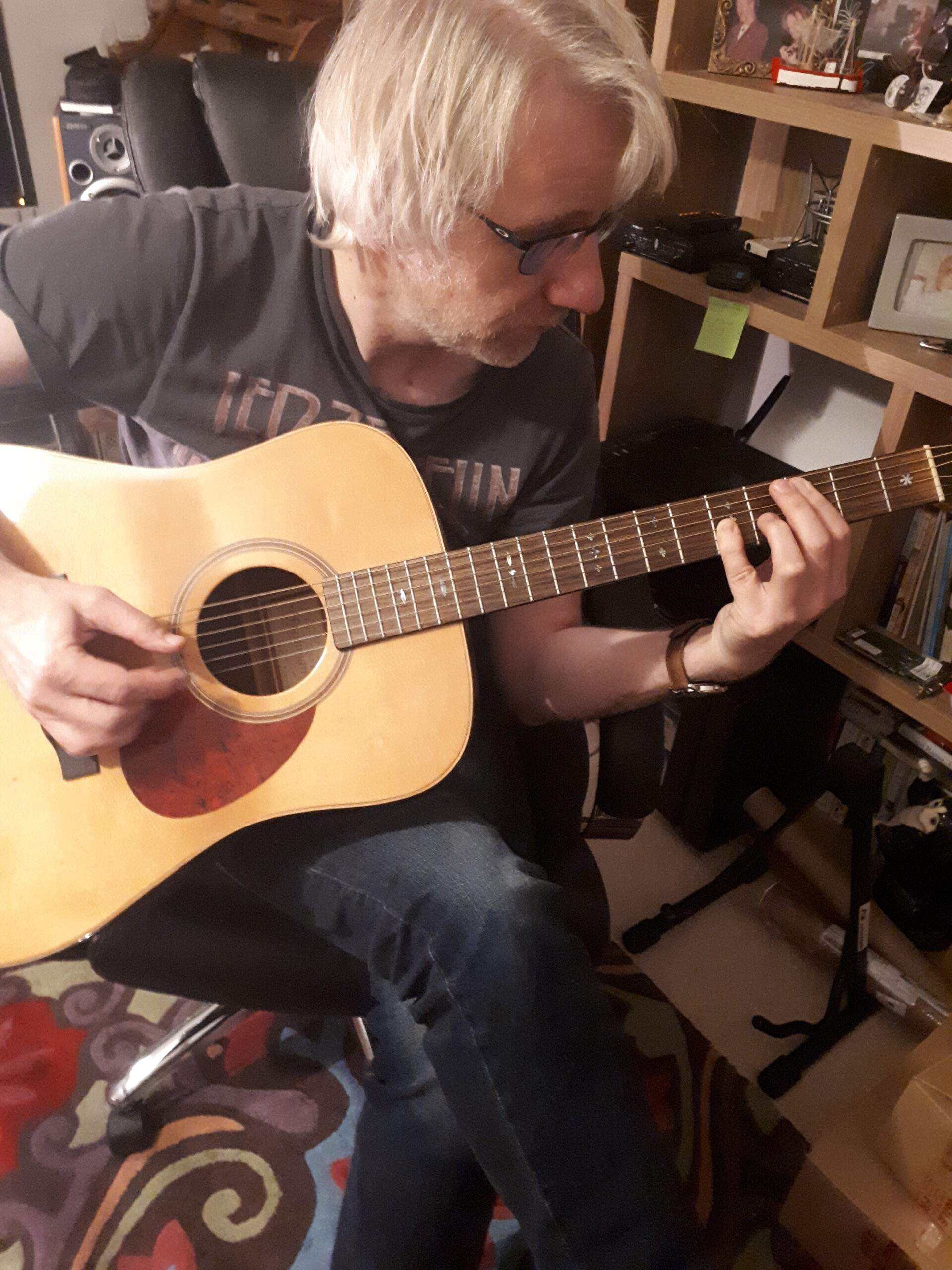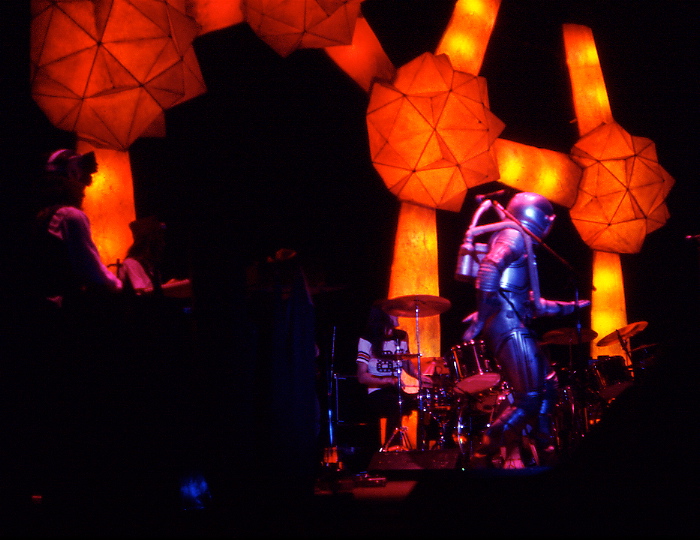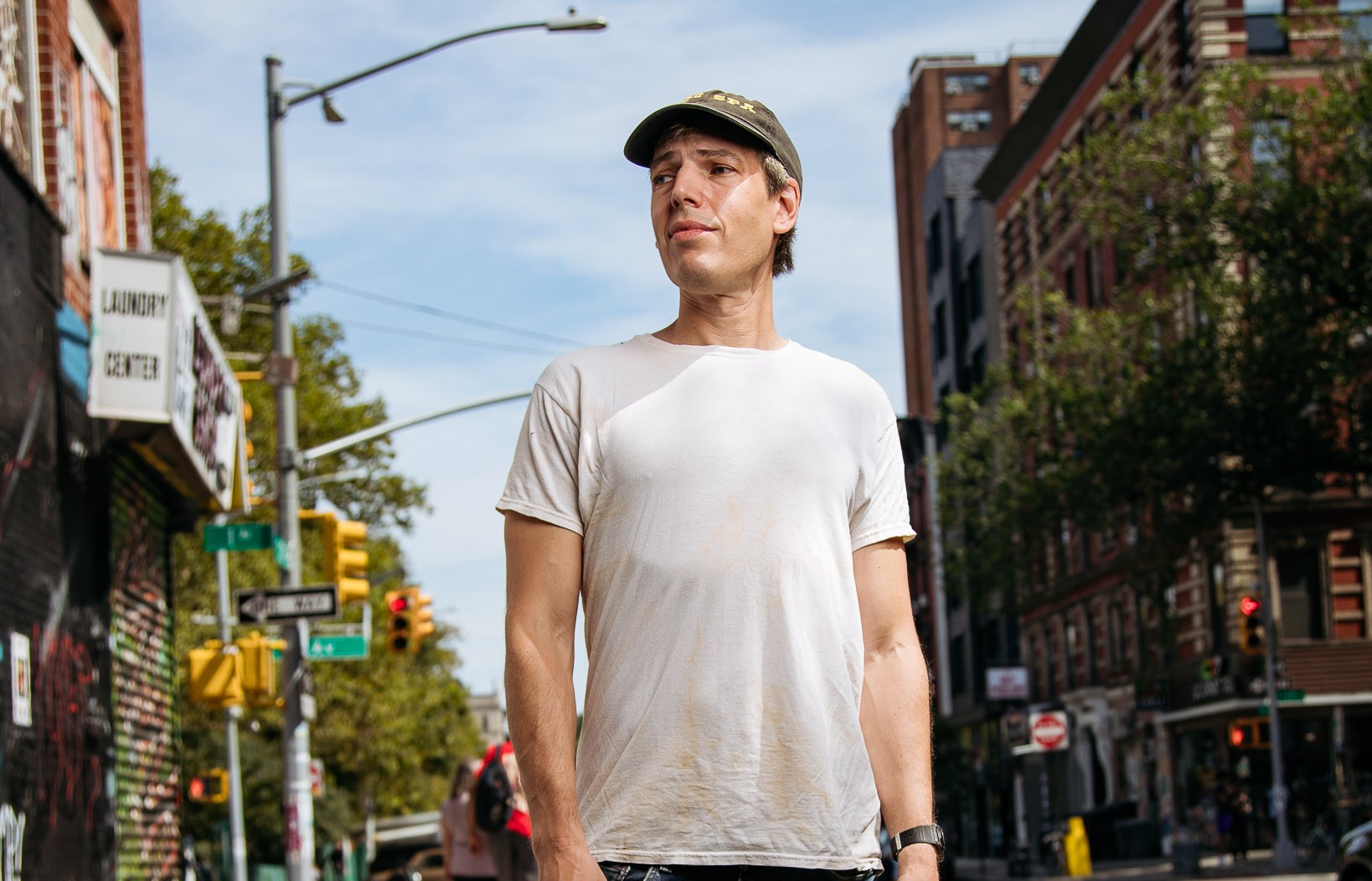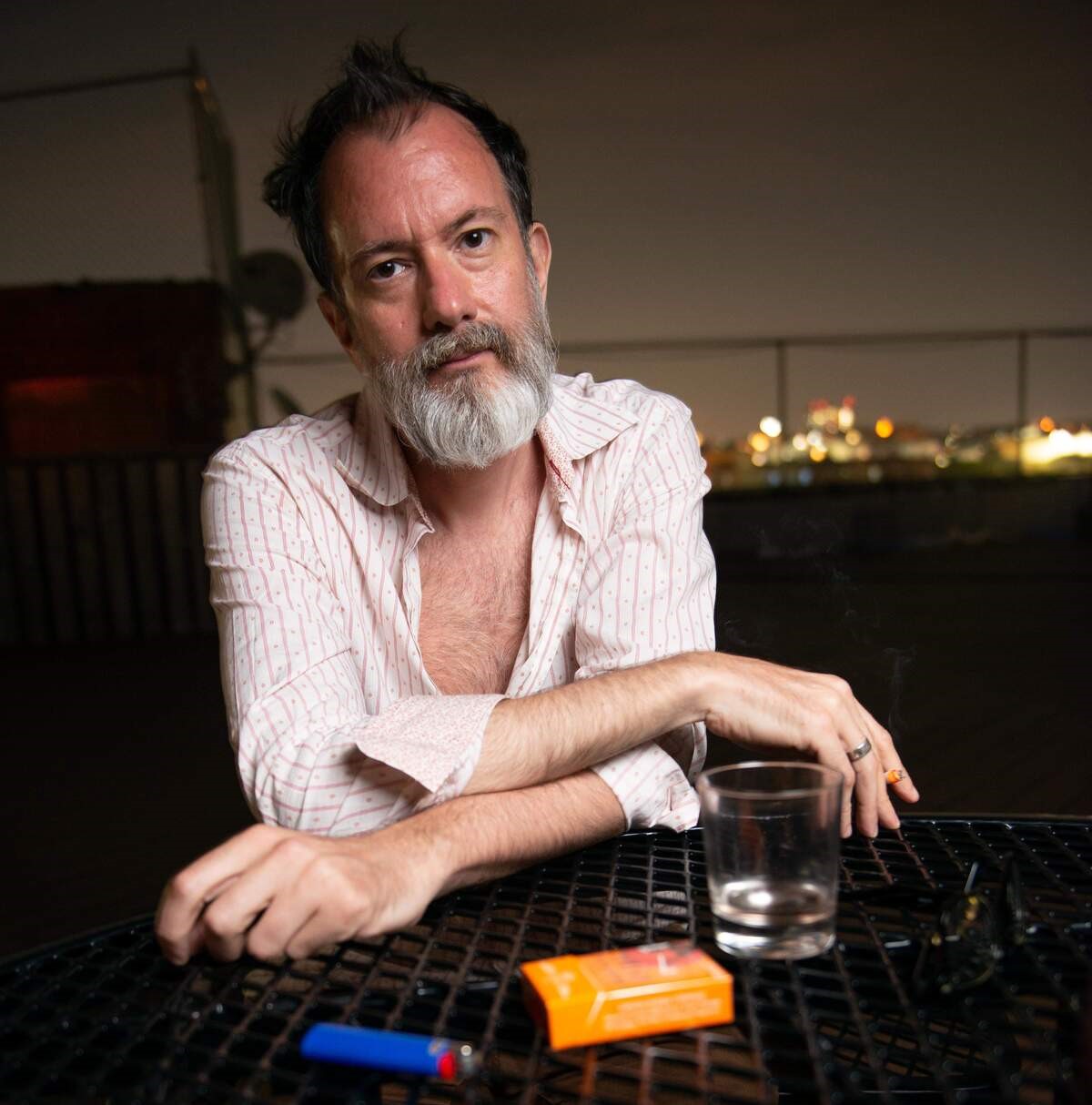Jim Griffin | Interview | New Album, ‘The Signal’
‘The Signal’ is a space rock concept album by multi-instrumentalist Jim Griffin, recounting the tale of an Edwardian astronomer in 1902 and his astounding discovery of an alien signal from distant Sirius.
The album features a range of guest musicians and electronic artists from across Ireland, the UK and the US. Including: Joe Bouchard (Blue Öyster Cult/Blue Coupe), Evelyn Cosgrave (IRE), Robbie Costelloe (Toucan) (IRE), PJ O’Connell (Hedfuzy/Ephemeral Cognizance) (IRE), David Colohan (Raising Holy Sparks/Agitated Radio Pilot) (IRE), Grey Malkin (The Hare and the Moon/Mortlake Bookclub) and Robin Parmar (IRE).
As part of post-rock instrumentalists Zombie Picnic, Jim Griffin released two well-received albums via Golden Shred Records (Ireland) between 2016 and 2018. As a solo performer, Griffin has also released two experimental folk-tinged albums via psychedelic folk drone label Reverb Worship (UK) and has been featured on Fruits de Mer (UK). His most recent solo album, ‘The Signal,’ marks Griffin’s first appearance on the Sound-Effect Record label (Greece).
The album recounts the effect of this strange event on his life and tells a cosmic story of “what might have been” across seven varied and progressive tracks. ‘The Signal’ is due out on limited black and mustard colour vinyl on March 17th, 2023, via Sound Effect Records.
“Put Blue Öyster Cult and H.P. Lovecraft together and you get ‘The Signal’!”
Would you like to talk a bit about your background?
Jim Griffin: Thanks Klemen. I was born and raised in Ireland in the 1970s and 80s. Back then Ireland was very different. We had very few links to the outside world and music from England and America was very exotic. My older brothers brought home Led Zeppelin, Rush, Deep Purple and Blue Öyster Cult records and we knew nothing about them except what the record sleeve said. Those were the days before the Internet and they were wonderful. You would walk into a shop and find that your favourite band had a new album out. Then you would save up your money for two weeks and finally buy it!
I think people of our age feel that younger people are a bit cheated of those strong feelings of accidental discovery and waiting. Everything is so immediate now, there are no surprises any more. I suppose I try and re-create those feelings in my music.
When did you decide that you wanted to start writing and performing your own music? What brought that about for you?
To be honest I just wanted to be cool and have sideburns like the Deep Purple guys on ‘Fireball’! Ireland was a little boring when I was growing up and the excitement of rock, punk and new wave music was something I longed for. I didn’t mind what music I played, I just wanted to be involved and play gigs where people drank pints, danced and had a good time – and I did!
“Sometimes pieces of music or lyrical ideas come from that process that suggest a way forward and that becomes a whole new album”
What’s your creative process? How do you usually approach music making? Is it any different when it comes to your solo material?
Yes. It’s very different when I’m working solo. When I make music with Zombie Picnic we write together in the practice space, like a Prog jam band. We’ll play for hours and work up an entire piece of music in an evening from nothing – a bit like the Grateful Dead meets Pink Floyd (I wish!!)
When I make solo albums it’s very much for my own entertainment. Often I’ll just want to play with a new instrument, guitar pedal or piece of technology. Sometimes pieces of music or lyrical ideas come from that process that suggest a way forward and that becomes a whole new album. I play a lot more quiet instruments when I’m working on a solo project – acoustic guitar, timpani, ambient synth patches – which wouldn’t work if you’re jamming with a band because nobody can hear them. So it’s fun to play with lighter shades of music when I can. But of course it means my solo albums can be too self-indulgent so it’s also good to involve outside people in that process too – to reduce the Prog madness!
Are any of you involved in any other bands or do you have any active side-projects going on at this point?
Since the COVID pandemic my solo work has tended to be my main project. Because Zombie Picnic was a jam band, we couldn’t get together and so we couldn’t write new material. When the pandemic ended it’s been hard to find that groove again – we might be another casualty of the plague…
So I’ve focussed on my solo work these last two years and that’s why I’ve included so many guest players on ‘The Signal’ – I miss being in a band so I try and recreate that feeling and energy with guest musicians. I think Brendan (drummer with Zombie Picnic) is also working with some guys in a band called Van Panther but I know it’s been hard for them too to survive the pandemic – live gigs and music have come back for very big gigs but a lot of local venues for smaller bands have closed in Ireland unfortunately.
Were you in any other bands before forming The Fewer, The Better? What was that band like?
My first proper band was in college. We were called Earthface and we were actually offered a record contract by the same label that signed The Cranberries who were also from Limerick, Ireland. The singer of that band is still a good friend of mine, his name is Shane Starr (that’s his real name!) and we’re hoping to work together again soon. We sounded a little like Pearl Jam and we had two guitarists so we had to have two guitar solos in every song!
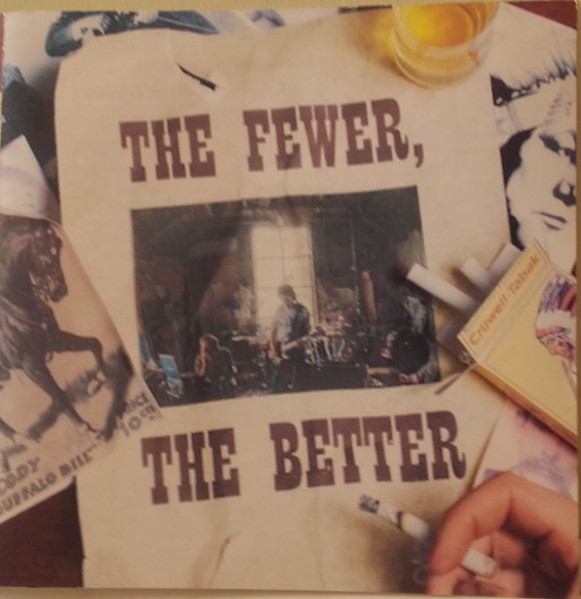
We were young but some of those riffs were pretty good – I wish I could remember them. This was before home recording was an option and making demos was really expensive so I only have a few recordings of us. We didn’t sign that record deal and I often wonder what would have happened if we had?
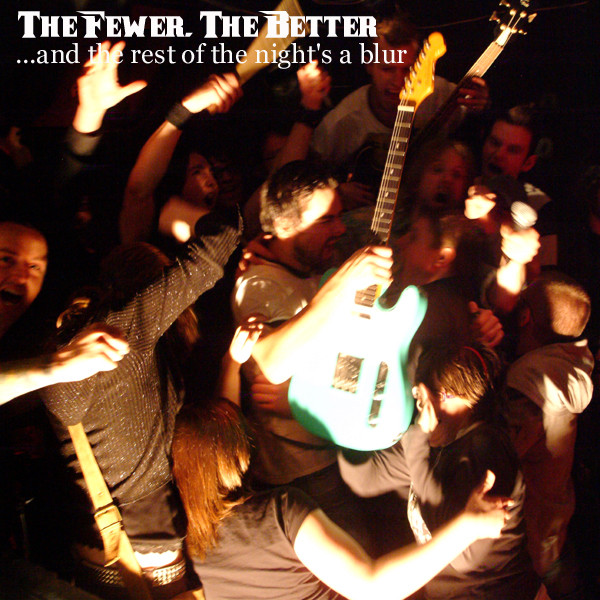
Can you elaborate on the formation of Zombie Picnic and tell us about the two fantastic albums that were released on Golden Shred Records?
Myself, Dave Tobin (Guitar) and Brendan Miller (Drums) had all been in The Fewer, The Better together from 2004 to around 2011. We were quite well known around Ireland and our gigs were pretty legendary for being “good times” (if you know what we mean).
But that band finished after two albums of straight up rock and we agreed we needed to do something more challenging. We agreed to just play instrumental music with no boundaries – we’d just meet and play for fun. We had gigged non-stop with The Fewer, The Better for years and I think we were tired. We had no plans to gig or even record the new stuff but then our friend Brian Fitzgerald asked if he could sit in one night and play bass. As soon as he joined all the music started to come together. It was quite special and suddenly we had enough music for an album of 4 ten-minute songs.
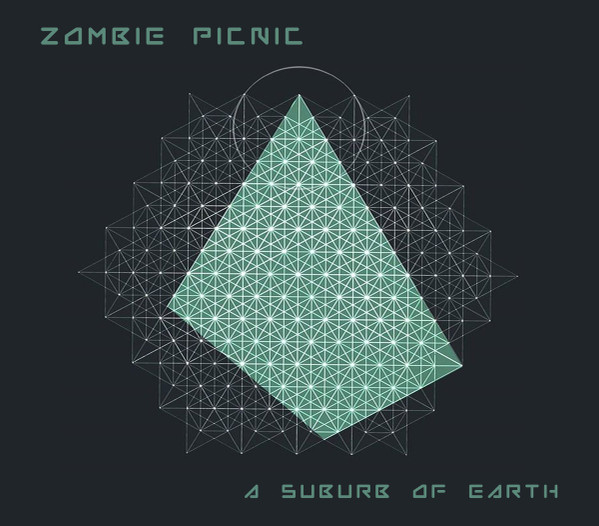
We went to a studio in Tipperary (GAF Studios, with engineer Joe Gallagher – a great guy!) to record the basic tracks and by that time I had my own home studio. I took all the basic tracks home and started to put them together with sounds snippets from Arthur C. Clarke stories and other effects. Prog music had started to become popular again thanks to Steven Wilson, Spock’s Beard, Marillion and other similar bands and there was a strong online community who were hungry for new music of this type. When the ‘A Suburb of Earth’ album was finished we released it on Irish label Golden Shred Records and it got immediate notice in that new prog community. I still think it’s one of the best albums I’ve ever been involved with and I’m very proud of it.
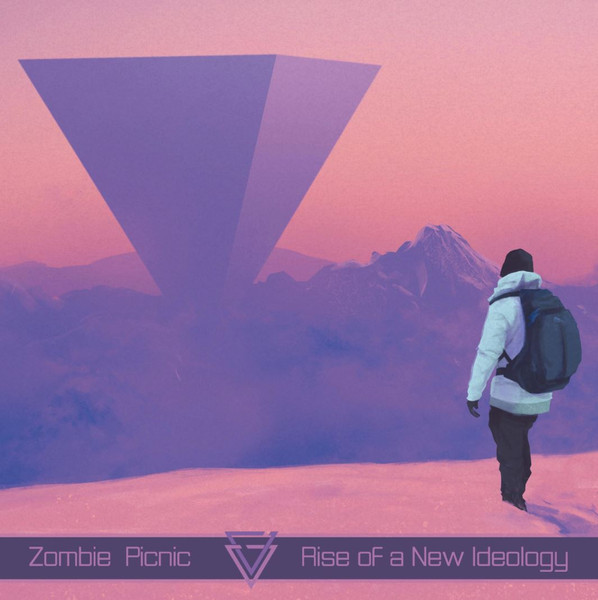
You also had a solo side to your musical output with the release of 2015 ‘The Ranger And The Cleric’ and 2017 ‘To A Far City,’ do tell us about the two releases.
I was very inspired by an interview I read with Neal Morse (Spock’s Beard, Transatlantic) around 2012. He talked about making the switch to “Prog” music from more popular rock formats. he spoke about making music purely for his own satisfaction. Around the same time Steven Wilson was saying similar things about avoiding the mainstream industry and making music that is personally satisfying. It made me want to try something like that by myself. I had always loved the acoustic guitar and I had a large amount of material that I had written over the years on old cassettes. When I started to listen back to some of them I realised that many pieces were really versions of similar chord progressions and so the idea of running them together into a single 40-minute track started to take shape. I was obviously influenced by Jethro Tull’s ‘Thick as a Brick,’ but also Mike Oldfield’s ‘Crises’ and modern Irish classical/traditional composers such as Shaun Davy.
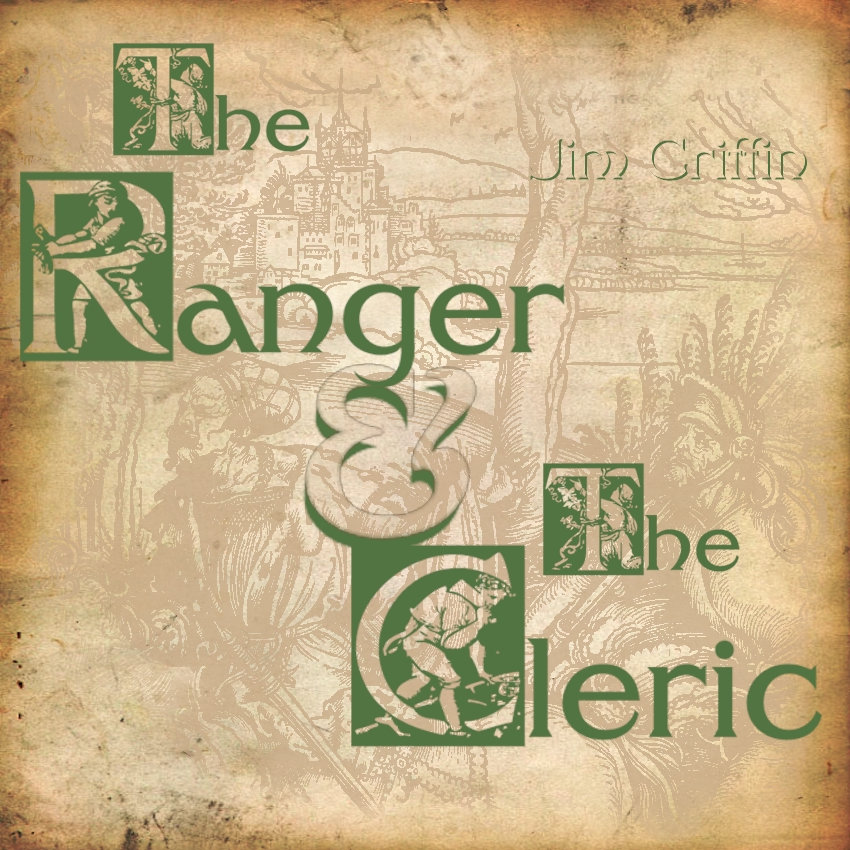
I wrote and recorded ‘The Ranger and the Cleric’ completely in my home studio with minimal equipment. I did this on purpose to keep control and to have a very authentic analog recording. When it was finished I played it for a friend of mine, Robin Parmar, who runs a small label in Ireland. He encouraged me to try and get it released so I contacted Roger Linney at the wonderful ‘Reverb Worship’ label in the UK. It turned out to be the perfect home for my experimental acoustic side and he released this album and then ‘To A Far City’ a few years later. He introduced me to a completely new audience and to many of the artists that would later feature on ‘The Signal’. ‘To A Far City’ included pieces from all of my previous bands that I re-worked and re-recorded, often with completely new lyrics. That album is very special to me as it contains elements from all my musical adventures and contains sound clips from my three daughters from when they were younger. My mother even painted the album cover, so it’s a very personal album in many ways. Myself and Roger still work together and he has been a great supporter of my solo music career. Thank you Roger!
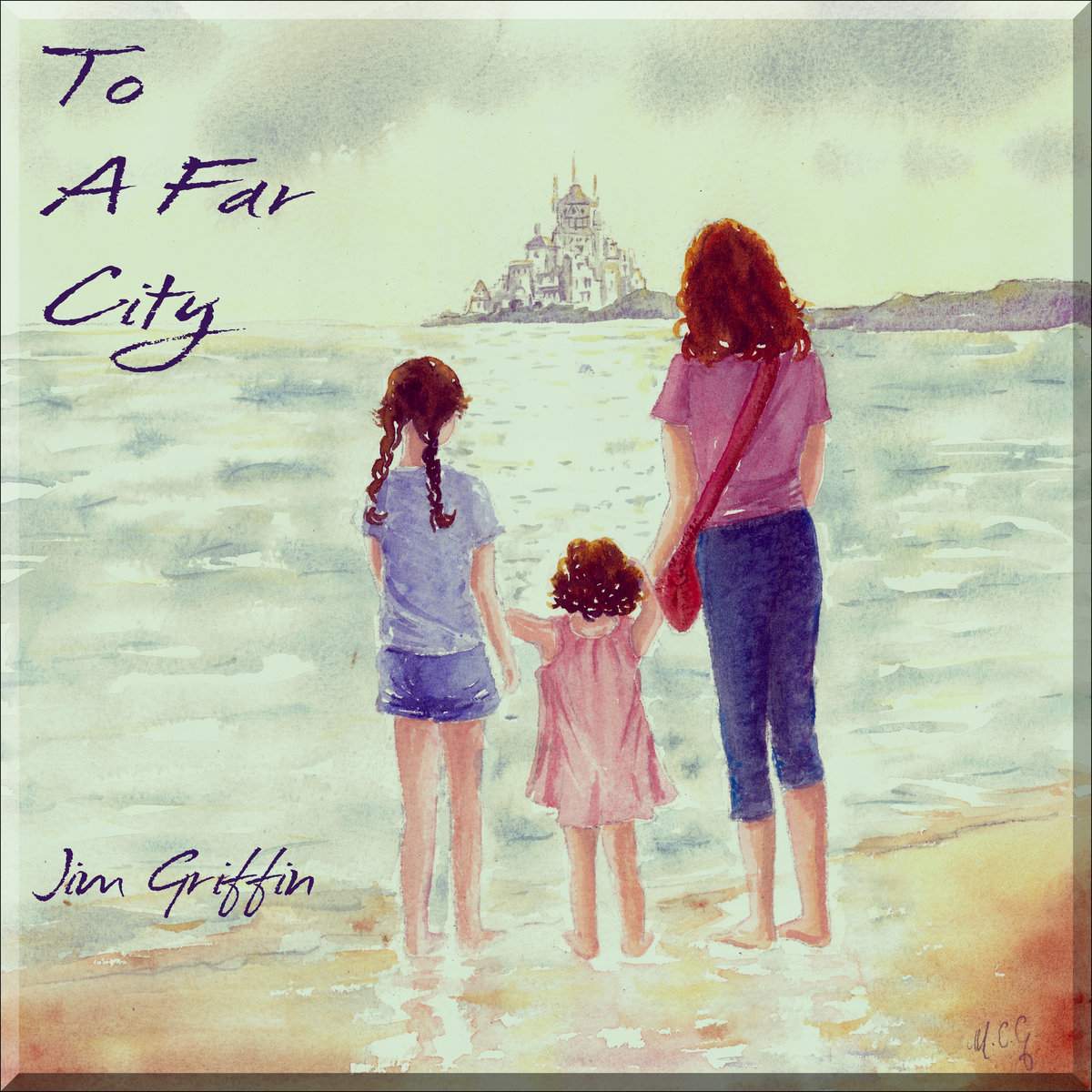
What’s the story behind your latest album, ‘The Signal’?
Ah! To understand ‘The Signal’ you need to know two things about me. First: I think the greatest album ever made is ‘Imaginos’ by Blue Öyster Cult. Second: I think the greatest science fiction writer every is H.P. Lovecraft. Put those together and you get ‘The Signal’!
I started work on that album in 2019. Initially the first few tracks (‘Intercept A0’ and ‘God of Rage’) were riffs from Zombie Picnic rehearsals that weren’t being used. I decided to work them up at home – using drum loops and playing bass myself as well. I intended to show the band that they could be good tracks for Zombie Picnic but they started to grow and grow into something more strange and I wanted to add lyrics (Zombie Picnic is strictly instrumental). So I started to think about another solo album.
Would you like to elaborate on the concept and how that transcended into your lyrics?
I wondered if I could write a set of lyrics that were an homage to both ‘Imaginos’ and Lovecraft. ‘The Signal’ takes elements from both and tells the tale of a young Edwardian astronomer in 1902, one Professor Atwood. He locates an alien signal from Sirius by accident. No-one believes him, and he works for years to perfect his strange machinery and prove his findings to be correct. It becomes all-consuming and he nearly completes his groundbreaking work. But just as he is approaching a breakthrough, his quiet scholarly life is disturbed by a visitor. A beautiful woman suddenly appears at his door one night, he falls in love and begins to forget about his work on the signal and enjoy a more normal family life. His machine is forgotten over time. Many years later his wife disappears mysteriously, leaving no trace behind her. He rediscovers his passion for his work and starts to wonder if she may have been sent from Sirius to distract him at that critical time so many years ago. Has she returned home to the Dog Star? Now his work begins again but this time he is trying to send a signal to Sirius to try to contact her, to ask her to return to him. He is no longer trying to receive an interstellar message – he is trying to send one – his work is reversed! But alas he has grown old and his son finds him one day, dead in his ancient study surrounded by his journals and notebooks. His son begins to read this strange material and at that very moment his father’s machine springs to life. Atwood is dead, but his machine is alive!
What kind of gear did you use to record the album and where did you record it? Who was behind the production?
I recorded most of it in my home studio, which these days is reasonably advanced. I don’t believe in using too much gear so just the basic outboard gear – Behringer compressor and 6-channel I/O device, some tube pre-amp stages and a couple of good Samson and Akai microphones. I used some VST instruments and Valhalla DSP effects for the “spacey vibe” keyboards in my DAW, using a Groovestation midi controller. My Les Paul Studio, Freshman acoustic and a J&D bass were the guitars I used on the whole album. Most of the drum tracks were programmed by me in various drum plug-ins. Some other drum tracks were recorded in a studio. I mixed the album, and my Mastering Engineer is Richard Dowling of WAV Mastering, Limerick. The whole album has been remastered by him again especially for this new vinyl release on Sound-Effect records. I think it sounds great!
You had many guest appearing on your album, would you like to tell us who all were part of the album?
I had a list of electronic artists that I really admire and that I thought might be up for working with me. I was really keen to work with electronic artists from different genres and not just rockers like myself! I was completing the album when the pandemic happened so it actually helped me because everybody was stuck at home looking for things to do, so when I emailed people they were very receptive. Some label-mates on Reverb Worship really helped me out with “Alien Signals”. I just emailed them individually and asked them “If you intercepted an alien message from Sirius, what do you think it would sound like?” I think they enjoyed this strange challenge! These are some of the best electronic artists I know. Jonathan Sharp of The Heartwood Institue, the mysterious Grey Malkin from The Hare and The Moon, my fellow Irishman David Colohan from Agitated Radio Pilot and Raising Holy Sparks. I also asked two other friends from Ireland who work in the electronic soundscape area to contribute sounds, they were Robin Parmar and Tomas Mulchay – good friends of mine and both have given me good advice over the years. They sent me diverse and interesting sound effects, most of them sent me two or three, it was great. I used them all on the album and those are the sounds that really give ‘The Signal’ a unique and unusual vibe. I am so grateful to them all.
Robbie Costelloe provides the fantastic saxophone solo on ‘Burden of Knowing’ – it’s a favourite moment of mine on the record. I’ve known and played with Robbie for years. It was nice to have a connection to previous bands by having Robbie on the record. I sent him the track and said “can you do a smoking sax solo at the end of this track?” he said “Of course” and that’s exactly what he did, in fact he provided about four versions, all amazing. It provides a completely different feel, almost a disco feel to the end of that track and it really helps to provide variety to the album – which is very important to me. When making a solo record I think it’s important to step out of your comfort zone when you can.
I was also delighted to work with PJ Gallagher on ‘Thought Experiment’. PJ plays with another Irish Prog Metal band Hedfuzy. We had toured with them the previous year and myself and PJ became friends. He is a fellow fan of Porcupine Tree, Guthrie Govan and Dream Theatre. We are blood brothers when it comes to music and we agreed that we would work together the next time I was making an album. When I wrote ‘Thought Experiment’ I knew that the guitar breaks were perfect for his shredding skills. He is an incredibly talented technical player and he didn’t disappoint! I haven’t talked to PJ for a while now but I hope to work with him again – I must drop him an email!
This album also includes my wife, Evelyn Cosgrave. She is an author and a poet and when I had completed the last track ‘Spiral Staircase’ I suddenly knew the album needed a female voice. The story is also very much about Atwood’s wife and what she might or might not represent. Evelyn had written a beautiful poem years before called ‘Matter Anti Matter’ and it was perfect for the spoken word passage in ‘Spiral Staircase’. We recorded it in one take and I am very happy and proud to have her on this record.
Of course, I also worked with Joe Bouchard of Blue Öyster Cult, but more on that later!
I really enjoy the cover artwork as it really capture the vibe of the record.
Well I completely agree! I had discovered the work of Wallace McBride (known as “Unlovely Frankenstein”) a few months before the album was complete. He had done a range of BÖC-inspired posters that were superb. I ordered a bunch of them and when it came time for artwork I immediately thought of him. I didn’t know him personally at all, but I took a chance because Joe Bouchard was on the album and he was obviously a big BÖC fan like myself, I thought he might be interested. I sent him a link to the album (it wasn’t even quite finished at that point) and asked him if he would be consider doing it. You have to take these kinds of chances when you’re working outside the mainstream. I always find people are usually interested and they’ll help if they can. What’s the worst that can happen? Somebody might say no – well that’s cool, there’s always someone else.
But as it turns out, Wallace is one of the nicest guys you could meet! He loved the album, we communicated a lot about the music, about life in general and then one day, out of nowhere (like the signal itself!) – he sent me the artwork, exactly as you see it now. It could not have been more perfect. I was truly amazed. He did all that work for someone he never met – what a great guy! Wallace has also contributed brand new artwork to the inner sleeve and labels of the new vinyl version on Sound Effect Records and again it’s in perfect keeping with the story and feel of the album. It shows glimpses of ‘Atwood’s Machine,’ his notes and journals and it’s stunning. I can’t wait for you to see it!
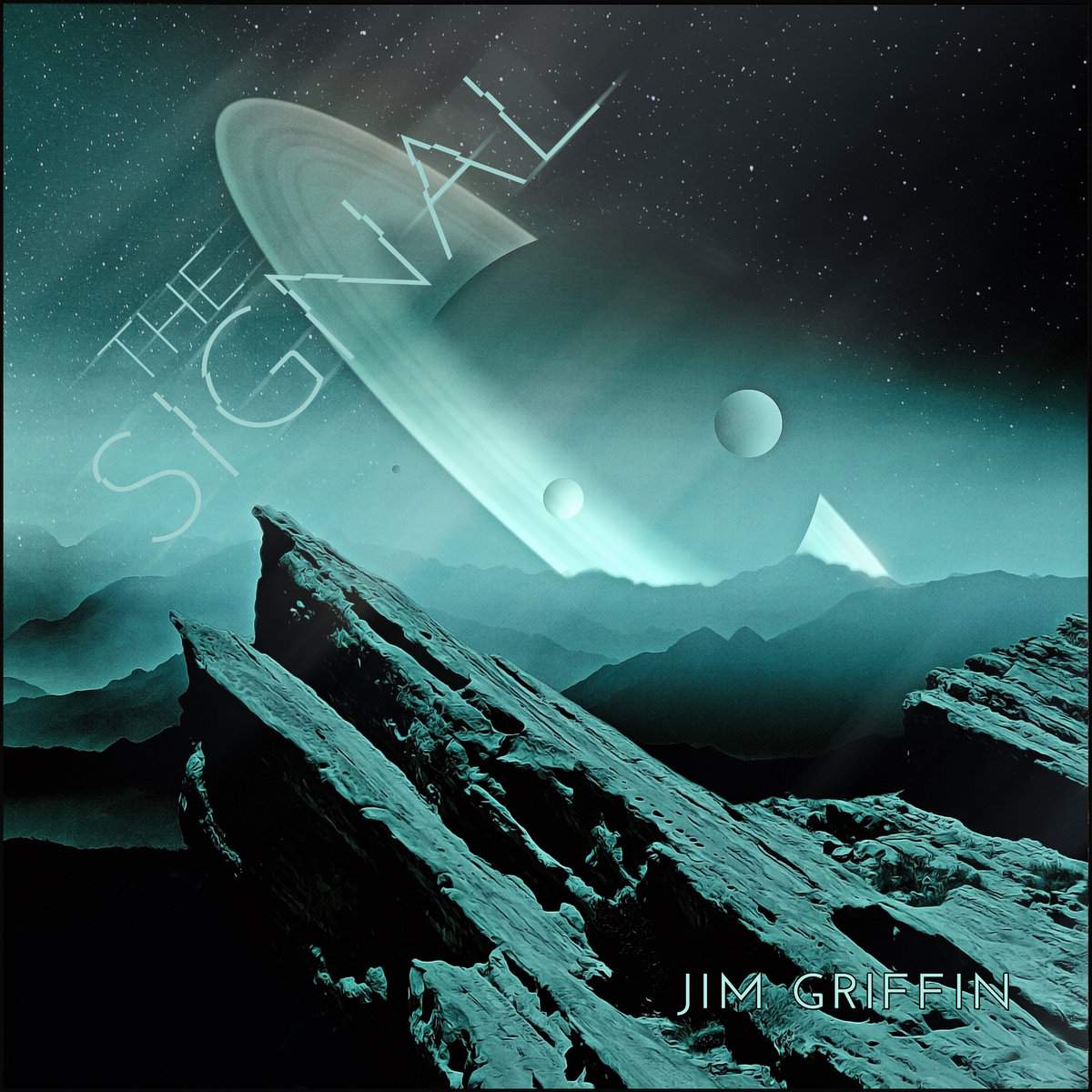
What was it like to work with Joe Bouchard?
It was tremendous and it was interesting to see how years of experience and serious talent can make the creative process so seamless. I am a huge Blue Öyster Cult fan. My brother had bought Secret Treaties and I think I heard it first when I was in my mother’s womb! So over the years I have followed Joe’s career – he has made some amazing solo albums and back in 2007 he toured Ireland with his band at the time The X Brothers. A small group of us went to all the shows and we started to hang out with Joe and the band as they started to recognise us. He told us some great stories from his days with BÖC as we drank JD and Coca-Cola in Galway one evening. I kept in touch with him over the years and when I needed a voice actor to read the spoken word parts of Professor Atwood on ‘The Signal’ I knew he was the perfect person. I just messaged him on Facebook and asked would he do a spoken word piece for me. Of course he wanted to hear the track first and luckily he liked it. There is a song on his solo album ‘Tales from the Island’ called ‘Perpetrator,’ he does some spoken word on that and I asked him to read the piece on ‘Thought Experiment’ just like that track. He had the recording done the next day and sent it straight to me – a real professional!
After he did that track for me, he also guested on a podcast that I do with Brian Watson on Progzilla Radio online. The podcast is called “The Bungo Pony Podcast” and is dedicated to all things BÖC-related. He came on and talked for over an hour about music, touring, recording and everything else from his life in rock music. You can find our Podcast on Spotify and listen to that show, he’s fascinating and entertaining in equal measure.
I met him again last year when he toured the UK with his brother Albert and his partner Joan. He sang Barry Manilow’s “Mandy” to us over breakfast in the hotel, what a great guy!
What’s next for you? Are you excited to hear it on vinyl?
I cannot wait to hear the album on vinyl. Because the album was inspired by ‘Imaginos,’ I think I always had a vinyl release in mind when I was making the album – that’s why there are just 7 tracks, so that it would fit on each side! Sound Effect Records have done an amazing job on the production of this record and I’m excited for everyone to see and hear it.
In terms of what’s next for me, I have been working on another solo album. Completely different from ‘The Signal’. It is an album of acoustic guitar loops, mellotron and field recordings – all inspired by my local hometown of Limerick. You could say I’ve come back down to to Earth with this one! It is finished and I hope to have it out later this year.
Are you planning to play some shows?
I would really like to tour my solo material, it is an ambition of mine. But of course, playing this kind of music live takes considerable planning and a number of musicians so I think it will be a little while before we can make that happen. I’ve done a lot of touring and gigging in my life so I would want to do it right!
Today we are premiering video for ‘The Burden of Knowing’, please tell us about it.
This track is a very important part of the storyline of ‘The Signal’ and it has some of my favorite lyrics on the album. This is why I wanted to make a lyric video for you today. It also has that saxophone solo from Robbie Costelloe and some of the electronic signals provided from my electronic music collaborators mixed in so it has all the elements of the album in the one place. I hope people can sit back and enjoy the music as they follow the lyrics and enjoy the spacey visuals – I like to keep my lyrics quite critic so I hope people can put their own interpretation on things.
Let’s end this interview with some of your favourite albums. Have you found something new lately you would like to recommend to our readers?
I listen to anything and everything. I find things now on Bandcamp, which is a great platform for directly supporting artists and smaller record labels. Recently I have discovered Greg Foat – a UK modern Jazz and electronic artist. I have also been collecting the work of Michael Tanner who recorded many beautiful soundscape albums over the years. There are some great Prog albums coming out as well these days – the new Riverside album and of course Porcupine Tree from last year. But I like to keep my listening as varied as possible. There’s so much great music out there I want to hear as much of it as I can!
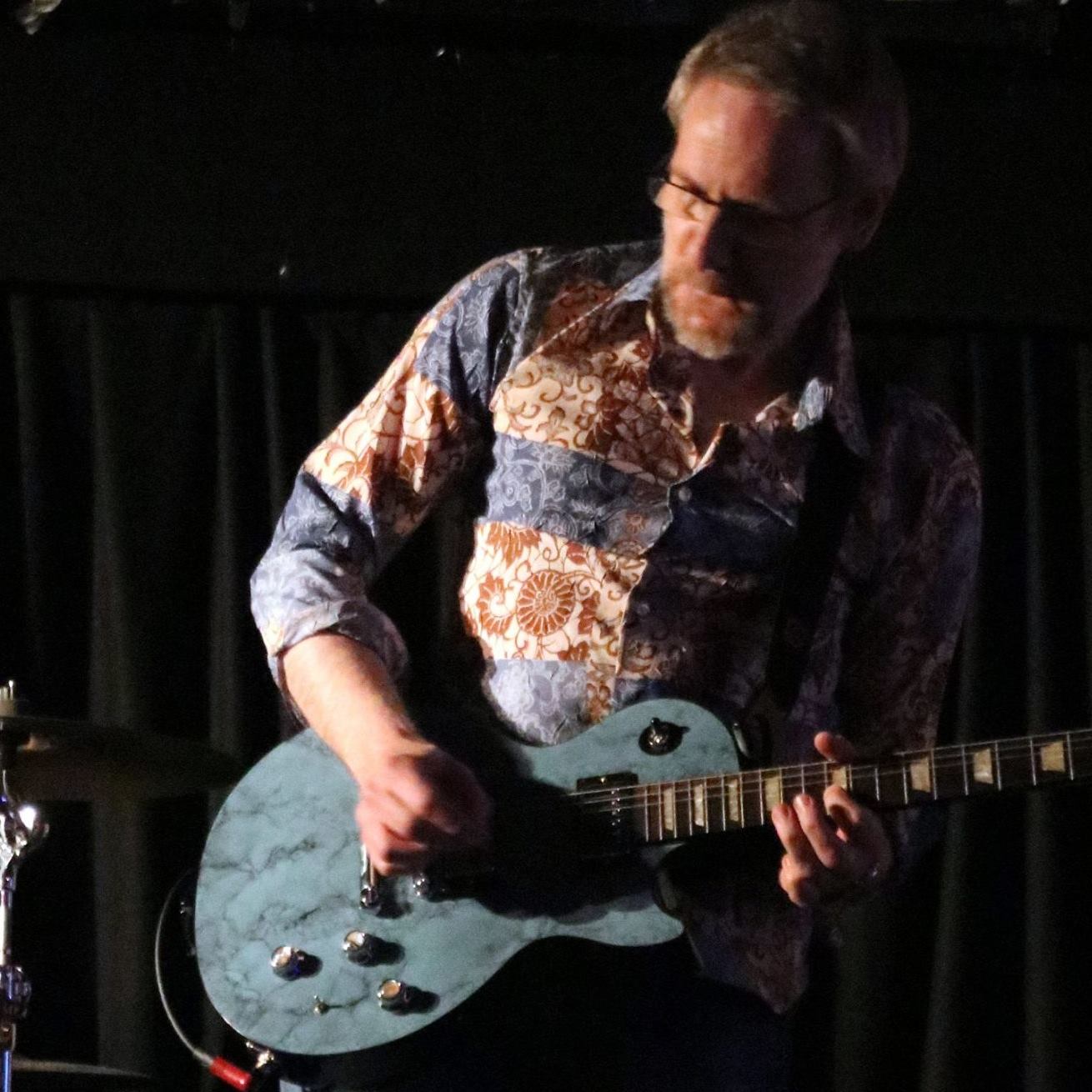
Thank you. Last word is yours.
Thanks so much Klemen, I’ve enjoyed telling you about this album and myself. I hope I haven’t bored you all! I’d just like to finish by asking everyone to support musicians and artists by buying their music directly from the artists themselves or from smaller local record labels like Reverb Worship in the UK or Sound Effect Records in Greece. That’s what keeps us going!
Now as we say in Ireland, “Slán agus beannacht libh”.
Klemen Breznikar
Headline photo: Jim Griffin recording at his home studio in Limerick, Ireland
Jim Griffin Facebook / Bandcamp / YouTube
Zombie Picnic Facebook / Instagram / Twitter / Bandcamp
Sound Effect Records Official Website / Facebook

